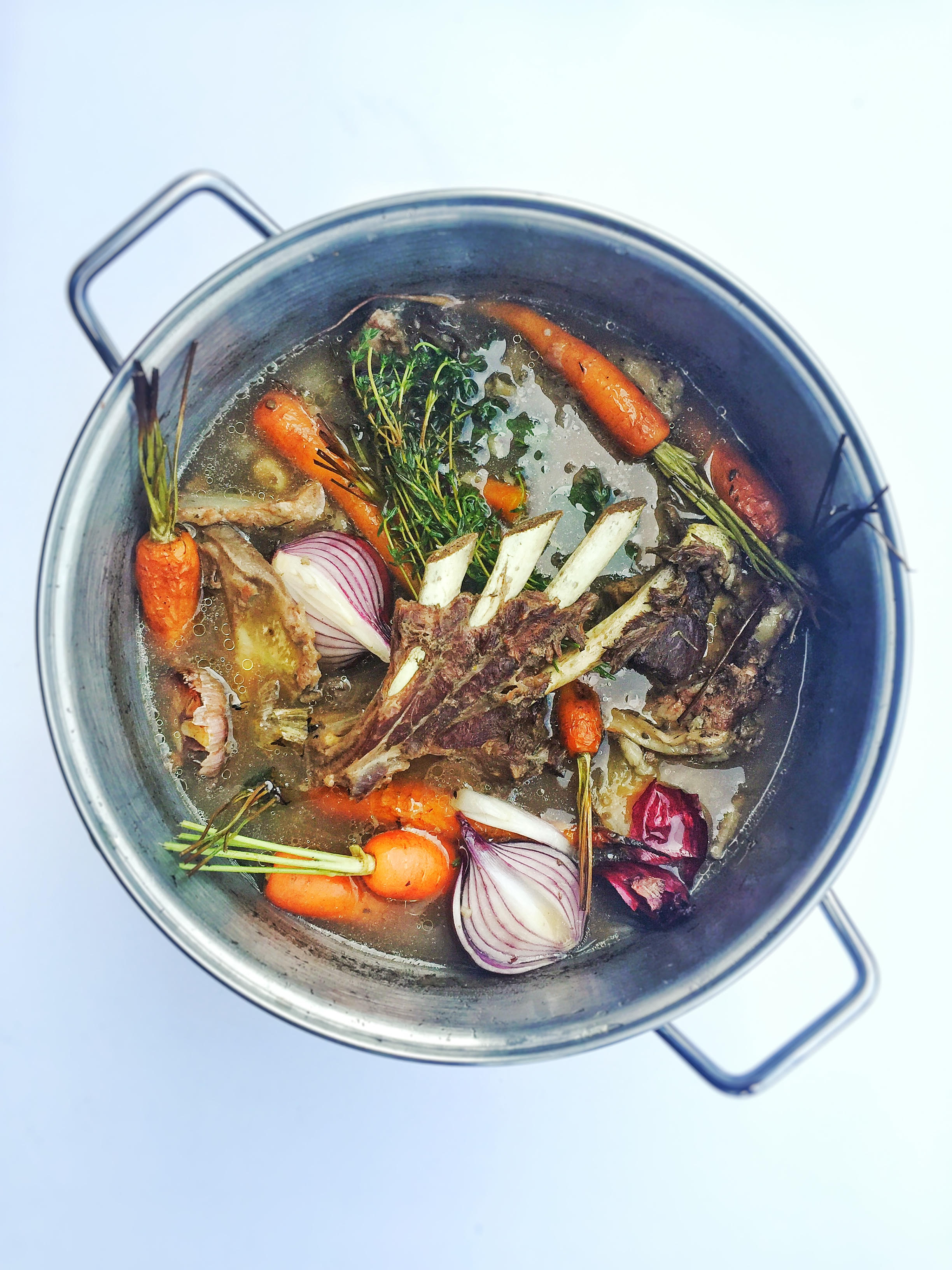 When I worked in the restaurant, every afternoon we made big simmering vats of stock which we would then reduce overnight. Each time, we would peel and halve kilos of onions, throw in countless chicken carcasses and pigs feet, top and tail sacks of carrots before peeling them then leave the lot to gently poach for hours. This was not a one person job. Nor was it a particularly fragrant one, either. I'm grateful I didn't have to sit next to myself on the train home.Bee complains about the smell whenever I make stock at home. Generally, it's only chicken based, but occasionally I get a few bags of bones from the butcher and return to the restaurant method to make a deep, rich broth, meaty and gelatinous and full of flavour. For me, the smell of stock cooking is comforting, homely and cosy. It speaks of the nourishing meals to come, from ragùs to Thai broths, fancy sauces to simple soups.All you need to do is get the largest and deepest pan you have, get a load of bones from your butcher as well as plenty of carrots and onions (peeled) and throw them all in. Cover with water, bring to the boil and let simmer for at least six hours. Add some herbs such as thyme, rosemary and bay for the last hour or so then leave to cool. You can use it now if you like, (strained) but I prefer to add another stage just to really concentrate the flavours:The next day (unless you fancy doing it right away, up to you), remove all the bones and vegetables, throw them out and strain the stock back into the pan.Bring to the boil for ten minutes then simmer until reduced by about half. Let it cool then cover and put in the fridge. It freezes well, so if you have plenty you may want to do this. If not, it should keep for about five days. It may seem like a long process, but I promise your gravy will be amazing.
When I worked in the restaurant, every afternoon we made big simmering vats of stock which we would then reduce overnight. Each time, we would peel and halve kilos of onions, throw in countless chicken carcasses and pigs feet, top and tail sacks of carrots before peeling them then leave the lot to gently poach for hours. This was not a one person job. Nor was it a particularly fragrant one, either. I'm grateful I didn't have to sit next to myself on the train home.Bee complains about the smell whenever I make stock at home. Generally, it's only chicken based, but occasionally I get a few bags of bones from the butcher and return to the restaurant method to make a deep, rich broth, meaty and gelatinous and full of flavour. For me, the smell of stock cooking is comforting, homely and cosy. It speaks of the nourishing meals to come, from ragùs to Thai broths, fancy sauces to simple soups.All you need to do is get the largest and deepest pan you have, get a load of bones from your butcher as well as plenty of carrots and onions (peeled) and throw them all in. Cover with water, bring to the boil and let simmer for at least six hours. Add some herbs such as thyme, rosemary and bay for the last hour or so then leave to cool. You can use it now if you like, (strained) but I prefer to add another stage just to really concentrate the flavours:The next day (unless you fancy doing it right away, up to you), remove all the bones and vegetables, throw them out and strain the stock back into the pan.Bring to the boil for ten minutes then simmer until reduced by about half. Let it cool then cover and put in the fridge. It freezes well, so if you have plenty you may want to do this. If not, it should keep for about five days. It may seem like a long process, but I promise your gravy will be amazing.
Taking Stock
in Food Writing, Meat, Recipes, vegetables
